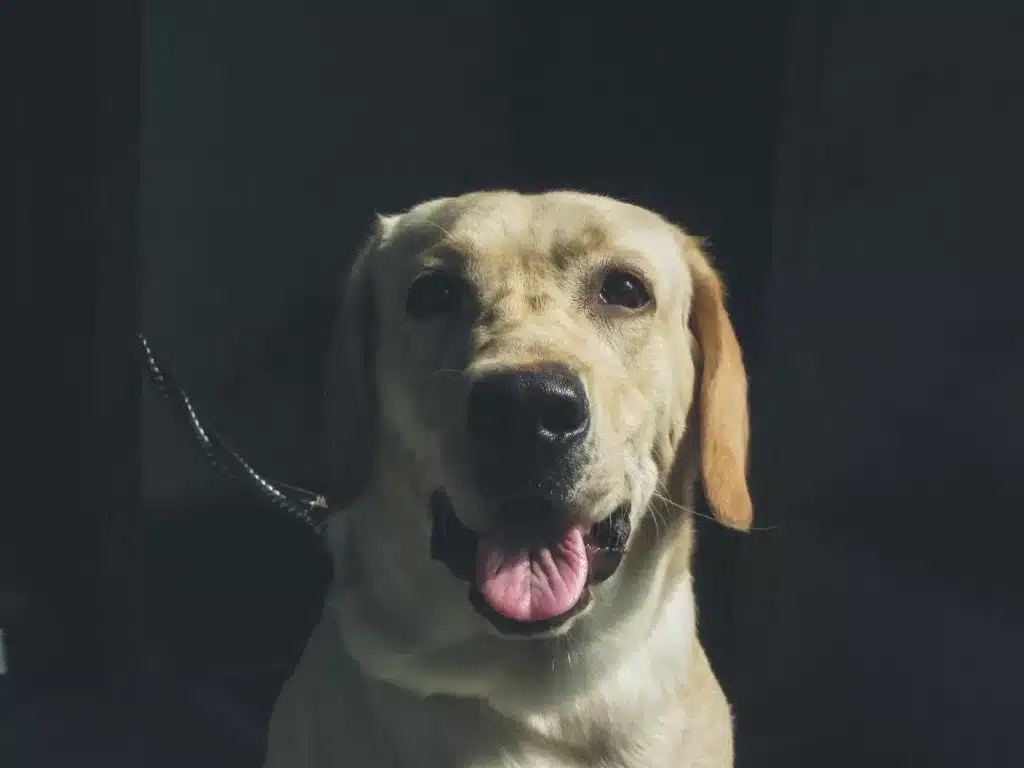Guess what? Your dog’s face has these cool things called whiskers! They’re not there for show – they have a special job. So, why do dogs have whiskers?
You know when your dog takes a big drink, and then when they kiss you, it’s all wet? Well, those whiskers help with that!
Whiskers grow on your dog’s face, kind of like big eyebrows or fuzzy cheek strings. They may seem random, like freckles on a person’s face, but they’re super important. Whiskers are like tiny guides for your dog in the big world.
Think of them as magical feelers. When your dog goes exploring, the whiskers help them navigate and understand their surroundings.
It’s like having built-in sensors! So, the next time your dog’s whiskers tickle you, you’ll know they’re on a mission to explore and understand their awesome world! What do you think your dog’s whiskers are telling them right now?
Table of Contents

What are whiskers?
Did you know that dogs are born with these special hairs called whiskers? They’re not any hairs – they’re also called tactile hairs or vibrissae. Picture them like superhero hairs because they’re thicker and coarser than the regular ones, and their roots go deep, like three times deeper!
Now, here’s the fun part – whiskers aren’t all over a dog’s body. Nope, they have a special mission, and you’ll find them above the eyes, on the chin, and above the upper lip. It’s like they’re the superheroes of the dog’s face!
And get this – whiskers are like a dog’s built-in touchy-feely sensors. Do you know how we humans use our fingertips to feel things? Well, dogs do it with their faces! It’s like their way of exploring and understanding the world around them.
Next time your dog’s whiskers tickle you, you can imagine they’re on a secret mission to discover amazing things! What do you think your dog is trying to feel with their whiskers right now?
Why do dogs have whiskers?
Dog whiskers are like superhero feelers on their face! They’re not regular hairs – they’re super special because they have nerves at their base. It’s like having a built-in alarm system!
So, when a dog’s whiskers touch something – maybe a toy or even the air around them – these nerves send signals to the dog’s super-smart brain. It’s like magic! Dogs can figure out what’s nearby, even if it’s dark. Imagine it’s a bit like how we use our hands to feel things when it’s hard to see.
Now, why are whiskers so important? Well, dogs don’t see as well as we do, and they don’t have hands like us. That’s where whiskers come to the rescue! They help dogs check out what’s in front of them and all around, keeping them safe and sound.
It’s like having little superheroes on their face, helping them explore the world. How cool is that? What do you think your dog’s whiskers are telling them right now?
What is dog whiskers for?
Think of a dog’s whiskers like magic hairs! Picture them as long, maybe white, gray, or black hairs that stick out from a dog’s face, like antennas. They’re super cool!
Now, here’s the really awesome part – these whiskers grow from a special place (we call it follicles) that’s filled with tiny nerves.
These nerves are like tiny messengers that talk to the dog’s brain. And guess what? These messengers are super smart! They can feel changes in the air around them.
So, when a dog’s whiskers touch something or feel the air moving, those nerves send messages to the dog’s brain, telling them all about what’s happening. It’s like having a secret code between the whiskers and the brain. How amazing is that? What do you think your dog’s whiskers are busy sensing right now?

4 Reasons Why Dogs Need Whiskers
Dogs have adorable faces, right? Well, guess what? Those furry faces are not cute; they’re also super helpful for dogs to stay safe and play around! Let’s check out three awesome reasons why dogs need their whiskers:
Whiskers help dogs see
It looks like our furry friends catch onto every little detail – from the fallen piece of chicken to the forgotten cup of wine on the nearby table (courtesy of your husband, of course, and without much thought). However, dogs aren’t exactly all-seeing, at least not with their eyes alone. Their whiskers play a crucial role in helping them understand their surroundings in a more sophisticated way than what their eyes can reveal.
Ever tossed a treat right in front of your dog’s nose only for him to struggle to find it? It can be quite amusing to watch him search for the obvious (to you) treasure right under his nose. Compared to humans, dogs have somewhat farsighted vision, especially those with long snouts and wide-set eyes (excluding breeds like pugs with shorter snouts). These features make it a bit challenging for your dog to focus on things right in front of him or hidden beneath his nose.
Has your typically laid-back pup surprised you by leaping over the coffee table like an Olympic athlete to chase the cat? Dogs’ eyes are designed to pick up on fast movements, like those of potential prey, and their whiskers aid in gauging the size, shape, vibrations, and speed of moving objects.
When a dog moves, it stirs up the air, causing the whiskers to bend slightly. This triggers a neural response, alerting your dog to move out of the way before colliding with something, such as the coffee table – turning him into a formidable predator, even for an unsuspecting kitten.
Whiskers help dogs show their emotions
Did you know that a dog’s whiskers are like their special way of talking to other dogs? When a dog feels upset or worried, its whiskers spread out and point down, kind of like a sad face. This happens along with other serious signs like showing teeth, growling, and giving a tough stare called the ‘whale eye.’
By looking at your dog’s whole body, including its face and whiskers, you can tell when it’s not happy. That way, you can help your dog feel better or give it some space if it needs it. Paying attention to your furry friend is important
Whiskers help dogs hunt
Dogs can have different sizes and numbers of whiskers on their faces, depending on the type of dog they are. Some dogs, like the Irish wolfhound, which is super big and fast, have really big and strong whiskers.
The Irish wolfhound was originally bred to chase after huge animals like moose. Can you imagine that? During fast runs through forests and tall grass, the whiskers helped the dog find its way and avoid bumping into trees. Nowadays, these dogs may not go on big hunts, but their whiskers still help them move safely around the house and stay graceful during hikes outside.
Here’s something cool – we should never cut or trim a dog’s whiskers. Why? Because the whiskers help dogs talk to each other and move around without any problems. So, let’s let our dog’s whiskers be, and get ready with a towel when our furry friend is super thirsty!
Whiskers protect the dog
These amazing hairs can feel even the tiniest things in the air! When a little speck of dust touches a dog’s whiskers, they might blink or shake their heads. It’s like a superpower that helps protect their eyes from getting hurt by even the smallest bits of dust.
But that’s not all – these whiskers are like guides for dogs when they’re out for a walk. They help dogs know if there’s anything tricky in the bushes, like a pointy branch that could hurt them. And guess what?
The whiskers even help dogs figure out if they can fit through tight spaces without getting stuck. How cool is that? So, let’s always let our furry friends keep their amazing whiskers intact!

How to care for a dog’s whiskers
Taking care of a dog’s whiskers is easy! The first rule is to let them be. Whiskers don’t need any special treatment. It’s not a good idea to comb or brush them because that might make your dog feel uncomfortable.
If your dog has long whiskers and you think it might be bothering their eyes, talk to the vet. Usually, it’s best to keep the whiskers as they are. But if there’s a problem, the vet can suggest a safe solution. So, remember – let your dog’s whiskers stay natural and if you’re ever worried, the vet is there to help!
Always remember, your dog’s whiskers are like their superpowers! They help your furry friend explore and understand the world around them. It’s important to respect these amazing whiskers and let them do their important job. So, be kind to your dog’s whiskers—they’re like little heroes on your dog’s face!
If you are interested read our latest posts:
1. Do Dogs Know Their Names? Unveiling the Surprising Truth with Canine Mastery